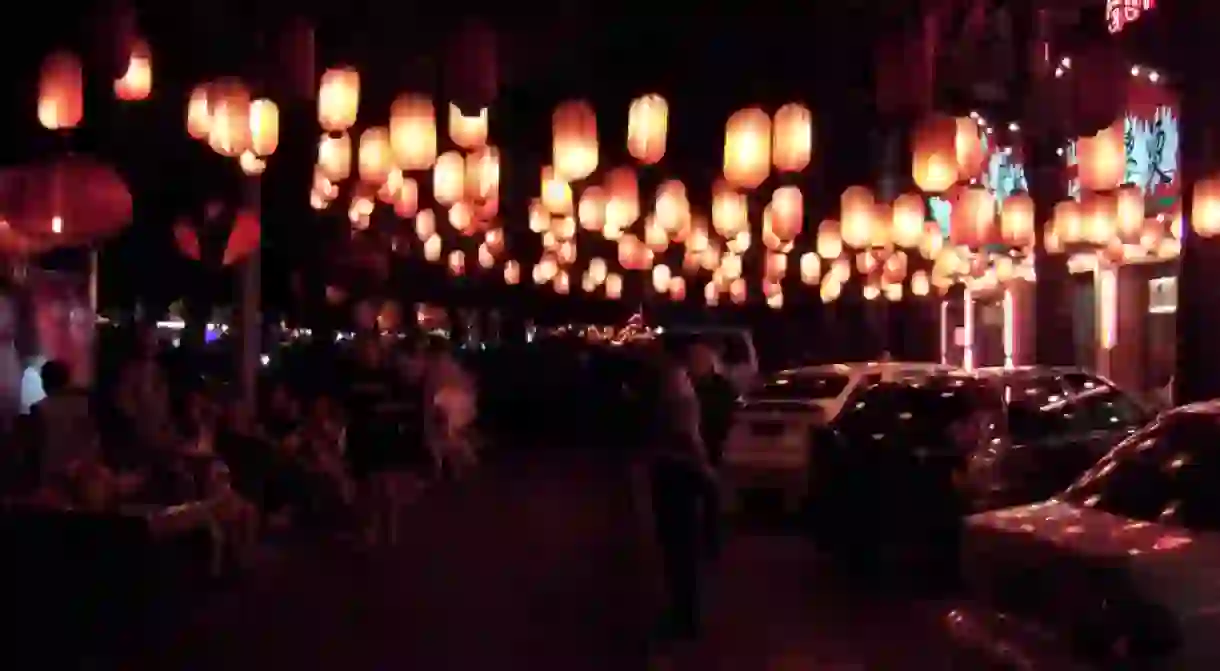A Foodie's Guide to Beijing's Ghost Street

Asked where to get midnight snacks in Beijing, eight of ten Beijingers would come up with “Ghost Street” without hesitation. Indeed, as a six-hundred-meter long street thickly dotted with restaurants that is open 24/7, Ghost Street seems like a never never land that you’ll just never get bored of.
But before the street’s name scares away some potential guests, some clarification appears necessary – of course, it’s not a street full of ghosts at night. As it is the street that leads to Dongzhimen, which used to be the special gate for transportation of the dead in the Qing Dynasty (1644 – 1912 C.E.), the street was once covered with coffin stores that led to its nickname: “Ghost Street (Gui Jie).” Nowadays, as the street has turned into a night food market, people changed the character of “鬼 (Gui, meaning ‘ghost’)” to its homonym “簋 (Gui)” which stands for the rice container used in the Shang Dynasty (1600 – 1046 B.C.E.), but the English translation sticks to its original nickname.
https://www.instagram.com/p/BY106zah9H_/?taken-at=10081515
When the first 24-hour restaurant in Beijing, Xiaolin Hotpot, opened on the Ghost Street in the 1980s, it caused a sensation in town, which then led to the proliferation of night snack bars on the street. Since then, the street has seen Beijingers’ ecstasy when it was announced that the city would host the 2008 Olympic Games in the July of 2001; and their tears and swears when China was defeated by Japan in the Asian Cup. It may be sad to see that today’s Ghost Street has more tourists than locals, and more and more people are becoming dissatisfied with the situation that most of the restaurants there are only chasing after the trendy dishes, instead of remaining loyal to their own tastes.
https://www.instagram.com/p/BY0pc0JDxWL/?taken-at=10081515
But the Beijing locals still go to Ghost Street for an important dish: spicy crayfish. While Ghost Street now is almost known as the Spicy Crayfish Street, you can nearly have the dish at any restaurant on the street at the price of 3 to 8 yuan ((US$0.46-$1.23) each (depending on the crayfish’s size). Out of all the crayfish restaurants, Huda Restaurant, with five branches on the Ghost Street, is the most popular.
There remain some tenacious restaurants that specialize in other cuisines as well. The Hua Jia Yi Yuan, located in a traditional Chinese courtyard, gives you the opportunity to dine on Beijing cuisine in the moonlight; the Lanxi Restaurant is a good place for the cuisines south of the Yangtze River; and the Yu’s Yard (Yu Jia Xiao Yuan), where you can have the best grilled pig trotter in the world.













